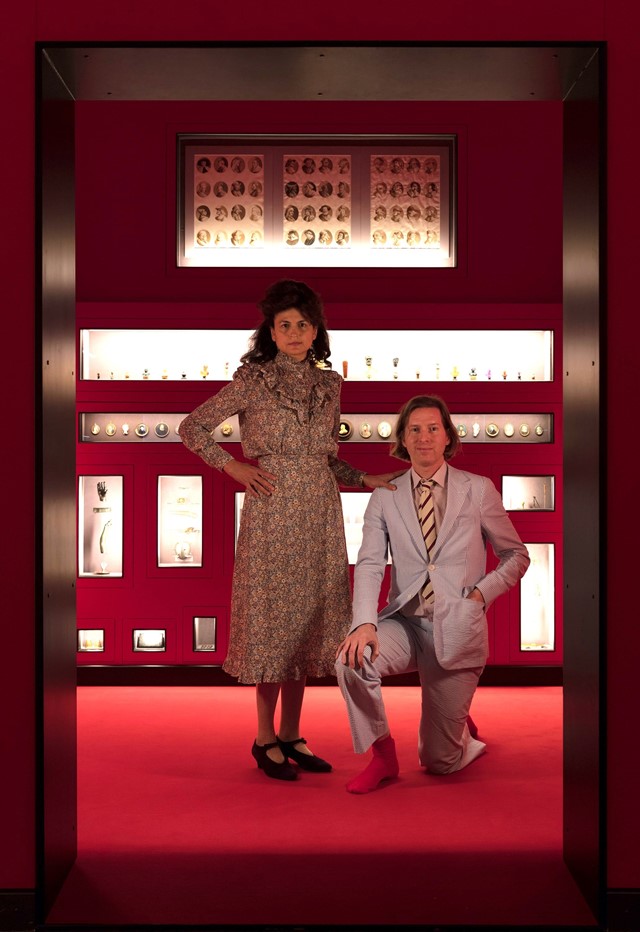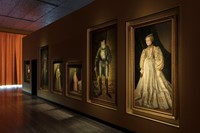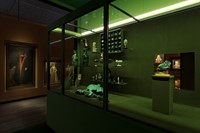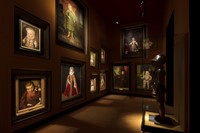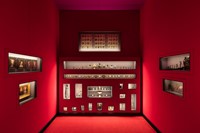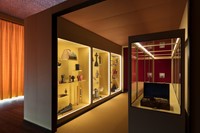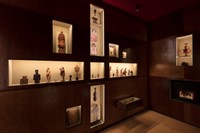We take you inside the curious curation of historical artefacts, hand-picked by the filmmaker and his wife and collaborator, Juman Malouf, and newly opened at Fondazione Prada
Last year the American filmmaker Wes Anderson and his wife, designer, writer and illustrator Juman Malouf, curated an exhibition at Vienna’s Kunsthistorisches Museum. This involved hand-selecting pieces from the museum’s collection of over four million objects – begun by the Habsburg family in the 13th century – as well as that of Vienna’s Naturhistoriches Museum, and presenting them as a sort of wunderkammer (cabinet of curiosities). The exhibition, comprised of 537 objects and titled Spitzmaus Mummy in a Coffin and Other Treasures, served to challenge traditional museum canons and engage audiences in playful new ways. And the good news for fans who missed it is that its second iteration – involving its relocation to, and adaptation for, Fondazione Prada in Milan – has just opened.
To enter the exhibition you must first pass through the Fondazione’s light-strewn foyer, a considerable contrast to the rich, dimly lit world that Anderson and Malouf have conjured inside. Floor-length, cadmium-orange curtains cover the room’s windows, resulting in a warm glow, and the space is punctuated by vitrines – small display rooms designed in collaboration with the architect Itai Margula – creating a maze of corridors. It almost feels like you’re creeping around the castle of some absent duke or duchess. And that, Fondazione Prada curator Mario Mainetti, informs me, is exactly the point. “It’s a nod to the first venue of the Habsburgs’ collection – the castle of Ambras, near Innsbruck, where they built a new building to house their pieces; it was kind of the first museum.” A new section, meanwhile, conceived specifically for the Milan show, represents the castle’s Italian Renaissance-style garden and pavilion, and features various objects related to nature and the outdoors – a sundial, a sea urchin, a statuette of Adam and Eve.
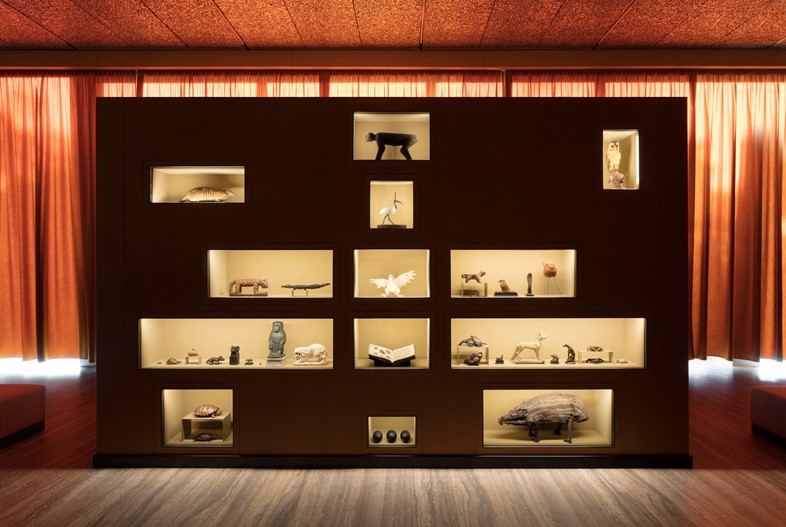
This feeling of being privy to something private is compounded by the fact that none of the objects are labelled or even numbered; if you want to know what something is, you have to consult a booklet where pieces are identified by corresponding drawings. This invites a more intuitive response to the objects – you’re not simply scouting out the Titian portrait, the ancient Roman bust or the 4.5 million-year-old meteorite, but responding to pieces according to your own interest. (I spent ages in a vitrine devoted to miniatures, admiring an Inuit doll and tiny pair of snowshoes, as well as two Austrian watercolours from 1750, planning out the route for a royal sleigh ride.)
The lack of exhibition text also poses the challenge of unravelling Anderson and Malouf’s multi-layered, frequently playful curation process unaided. Sometimes their intentions are obvious: one vitrine is rendered an aquatic green, for instance, and every object within its myriad display cases offers a variation on the hue – from the impressive trinket Emerald on a Gilded Copper Pedestal (1596) to three deep green emu eggs, laid especially for the exhibition in 2018. The same goes for a sumptuous, wood-panelled vitrine filled exclusively with wooden objects, spanning carved figurines, Egyptian funeral relics and intricate, 16th-century board game pieces.

At other times, patience and curiosity is required – and rewarded. In a room dedicated to idiosyncratic depictions of royal children, two paintings, placed facing one another at knee level, show young boys proudly clasping birds, while the protagonists in a row of variously dated portraits are united in their possession of a larger-than-usual nose.
One of Anderson and Malouf’s key aims, Mainetti tells me, was to “shine a light on pieces that are often overlooked” – hence the highlighting of the show’s eponymous Spitzmaus Mummy, a mummified shrew, complete with its own miniscule, hand-painted coffin. Whereas in the Kunsthistorisches Museum, it is usually lost among a display of multiple mummies, here this remarkable relic is placed in its own, centrally located case, prompting us to ponder its small, glorified inhabitant and the reason behind its ceremonious burial.

This delight in small curiosities is a very Andersonian trope, and one of many indicators that you are inhabiting one of his, and Malouf’s, painstakingly realised universes. Another is their appreciation for eccentric characters, evidenced in the peculiar men and women who peer from the selected portraits, while Anderson’s love of specialist paraphernalia is demonstrated in a saffron-hued vitrine dedicated largely to the accoutrements of battle, including the sheath for Charlemagne’s saber and a case for the war-robe of a Korean prince. (I could almost hear Alexandre Desplat’s rousing score for the Moonrise Kingdom fight scene.)
Opposite this display sits a 1950s make-up kit from the Theatremuseum collection, housed in a leather suitcase (another Anderson signature) filled with personal, rather than literal, treasures – among them two faded plastic Pez dispensers and a button box. This embodies the ethos that underscores the entire show: that beauty, and significance, lie in the eyes of the beholder. As Mainetti aptly summarises, “You’ll enter the exhibition imagining you’re about to discover Wes and Juman’s favourite objects but you’ll leave thinking about your own.”
Spitzmaus Mummy in a Coffin and Other Treasures is at Fondazione Prada until January 13, 2020.
